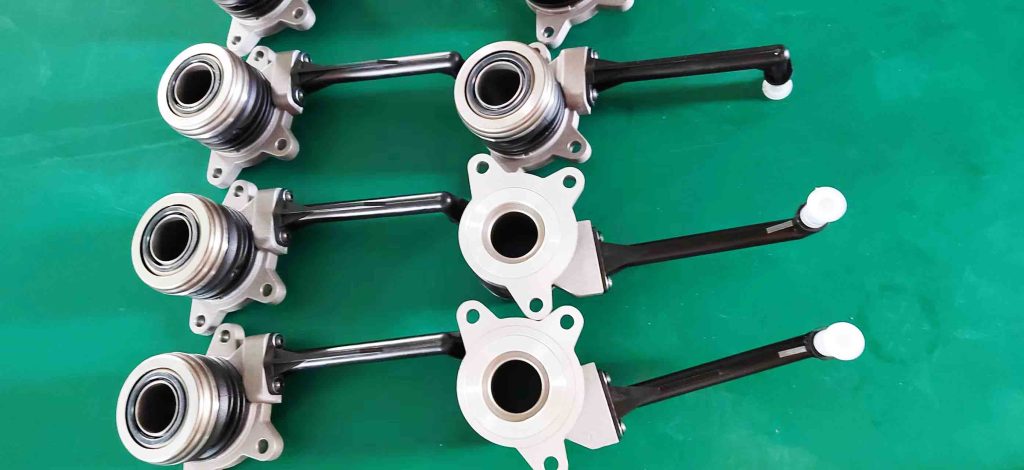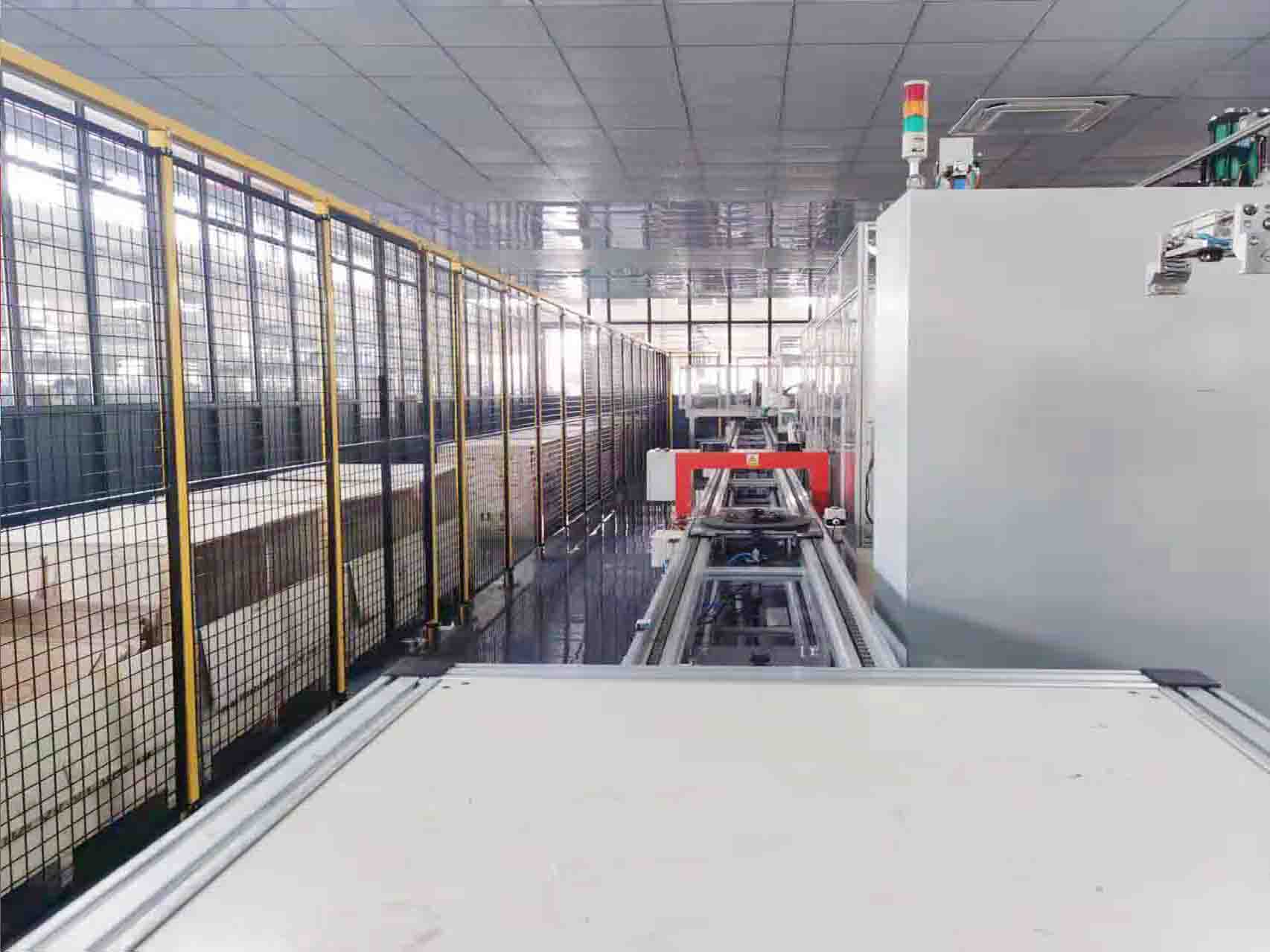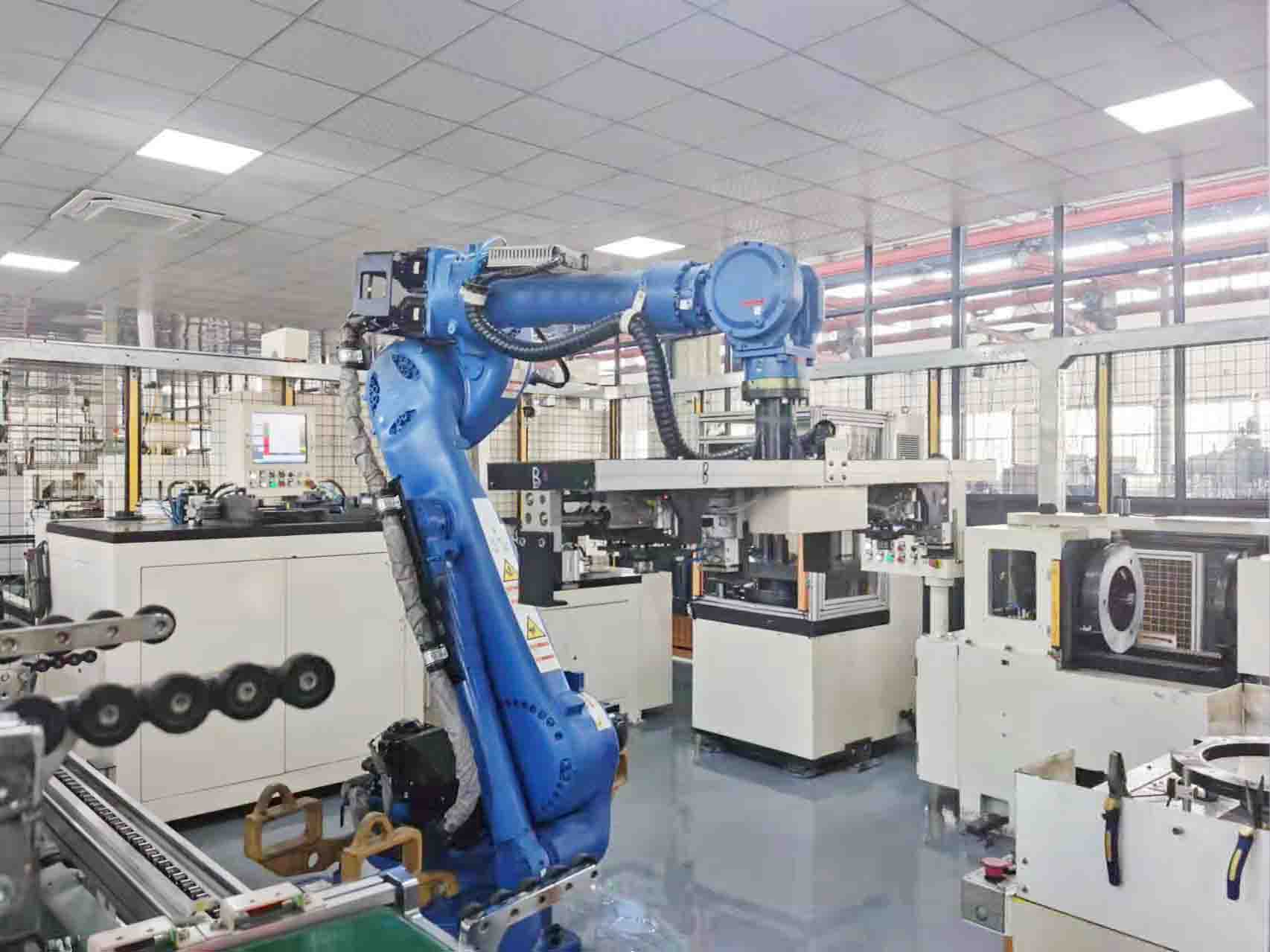How a hydraulic throwout bearing works
How a hydraulic throwout bearing works :Do you have a manual transmission car? If so, your clutch pedal is connected to a hydraulic throwout bearing. This part is responsible for releasing the pressure on the clutch disc, which in turn allows you to change gears. Without a working throwout bearing, your car will not bread more>>>

How a hydraulic throwout bearing works
Concentric Slave Cylinder
Pneumatic Release Bearing
Clutch Release Bearing
Clutch Disc
Clutch Cover
Belt Tensioner Pulley
How a hydraulic throwout bearing works
Orient is your trust hydraulic throwout bearing supplier in China which has made two efforts to ensure strict quality control. A complete dynamic recording mechanism for supplier quality has been established based on raw material evaluation. After confirming that the quality of raw materials provided by suppliers meets the requirements, raw materials can be accepted for storage, ensuring product quality stability from the source. Simultaneously, all produced bearings are subjected to a 100 percent comprehensive inspection before shipment, and only the inspection data can be sent to customers if they meet the requirements of the drawings. As a result, quality will not be an issue for you from the moment you call Orient with your order.
How a hydraulic throwout bearing works
You may be wondering how a hydraulic throwout bearing functions.
Here are the essentials. A clutch assembly with an excessively big gap may wear out before fully releasing. As a result, the clutch slips. To avoid these issues, you should check the gap on a regular basis. To assure the correct size, use a set-up tool.
Function
A clutch component is a hydraulic throwout bearing. Its primary function is to keep the pressure plate from sliding against the clutch disc, preventing the clutch from keeping correct tension. It is made up of two parts: an outer shell and a base. The hydraulic throwout bearing is a good substitute for the OEM bearing retainer.
It is available in a variety of designs to suit a variety of purposes.
A bad throwout bearing can cause problems with the clutch release bearing and perhaps the entire car. When this happens, the clutch pedal stiffens and gear shifting becomes difficult. It also degrades the throwout bearing’s lubricating characteristics. Furthermore, while driving, drivers frequently put their foot on the brake pedal, making it difficult to shift gears.
Hydraulic throwout bearings, fortunately, are simple to install. There are no complicated instructions or tools necessary. Installing a hydraulic throwout bearing requires only a rudimentary understanding of hydraulics and hydraulic systems. Hydraulic release bearings, also known as concentric slave cylinders, are precisely engineered for ease of installation, high reliability, and a low cost. The hydraulic release cylinders come with race-proven lubrication and a mounting base that allows you to modify the throwout bearing’s height.
How a hydraulic throwout bearing works
There is an air gap between the clutch assembly and the throwout bearing.
To ensure that your clutch functions properly, check the air gap between the clutch assembly and the throwout bearing. Then, press the throwout bearing to the bottomed-out position and measure the distance between the clutch assembly’s mating surface and the throwout bearing.
How a hydraulic throwout bearing works
You can back the bearing out if necessary after ensuring that the air gap is the correct size. Generally, depending on the type of bearing, you should leave a space of 4mm to 5mm. You risk clutch slippage if the gap is too great. Similarly, a slight air gap causes the clutch to slip and the bearing to fail. Furthermore, it may result in fluid leakage.
The most critical clutch setup aspect is the throwout bearing. A large gap between the throwout bearing and the clutch assembly will result in a faulty clutch set-up. The clutch will overtravel if the gap is too big, causing the clutch to slip or jam. To check the clearance, engage the clutch with a helper and repeatedly step on the clutch pedal. If the clutch has too much “play” when engaged, it could be due to faulty parts, incorrect geometry, or a badly calibrated clutch assembly.
How a hydraulic throwout bearing works
Mode of failure
The hydraulic throwout bearing is a mechanical component found in vehicle clutches. Its major duty is to depress the clutch pedal, which activates the clutch. This movement forces the throwout bearing into the diaphragm spring’s center. The pressure plate is then pulled away from the clutch disc and flywheel by the spring. This throwout bearing will eventually wear away and fail.
If the hydraulic throwout bearing fails, shifting gears may become difficult. It can potentially cause full clutch failure, necessitating costly repair or replacement. A faulty throwout bearing can also have a negative impact on the engine’s performance. This is why it is critical to anticipate a failure mode.
There are several indicators that a throwout bearing is failing. One of these is a grinding noise when pressing the clutch pedal. As the pressure in the system rises, the noise may worsen. Contact a professional if the noise is loud enough to be irritating. A stiff clutch pedal is another indicator of a failed hydraulic throwout bearing.How a hydraulic throwout bearing works.
While most technicians will tell you that excessive load is the most common cause of failure, the throwout bearing can also be damaged by excessive use or wear. If the damage is the result of excessive usage, the clutch release bearing is more likely to fail than if it is the result of excessive loads. This can happen as a result of constant shifts at high speeds or even an accident.
Common blunders to avoid
One of the most common mistakes to avoid when using a hydraulic throw out bearing is not disengaging the clutch properly. Failure to do so may cause the clutch to slip, resulting in clutch finger damage. In addition, if the throwout bearing is worn, the clutch pedal may be difficult to depress.
One of the most typical errors when installing a hydraulic throwout bearing is failing to properly position the mounting bracket. The mounting bracket should be angled between three and nine o’clock. Furthermore, the bottom of the bracket should not be facing down. A bleed line should also be used to prevent air bubbles. Another common oversight is failing to measure the distance between the clutch fingers and the hydraulic throwout bearing.
Concentric Slave Cylinder OE List
For JEEP
| 619002 |
| 619003 |
| 619007 |
| 619008 |
| 4638464 4638465 4728060 |
| 619004 |
For Man
| 81.30550-0115 81.30550-0250 81.30716-6105 |
| 81.30550-0074 81.30550-0079 |
| 81.30550-0272 |
For Scania
13208100
1522377
For Audi & Golf
0A5 141 671
20157577
02M 141 671B
0A5 141 671 H
0A5 141 671 L
0A5 141 671 N
02F141671A
02F141671B
0C6 141 671
0C6 141 671 C
0C6 141 671 D
0C6 141 681 C
For Chery
519MHA-1602501
For Dodge
| 4899035AB |
| 5038118AB |
For FIAT
| 55183321 |
| 55186498 60802015 |
| 55180328 55184437 55209138 |
| 55190965 |
| 55190965 |
| 46516373 55184041 |
| 55199563 55228666 55230696 55238035 55248403 |
| 55210245 55214650 55240573 55243919 |
| 55224014 55224015 55232692 55232693 55240571 |
55354177 5679356 |
| 55197680 |
| 55209342 |
| 55181216 55183501 |
| 46823418 |
For Land Rover & Jaguar
| UUB000010 UUB000050 UUB000070 |
| UUB 105300 UUB 105301 |
| UUB100192 UUB100193 UUB100194T |
| LR014290 UUB000100 UUB000160 |
| XR8Z-7A508-AA XR83-7A564-AA XR83-7K564-AA |
For SsangYong
| 3036021100 3036021300 3036021301 |
| 30360-34001 |
| 3036008100 3036008200 |
For Volvo
| 21580956 21580968 21580977 |
| 21459182 21580965 21934651 21934653 |
31259445 09181326 9181322 |
| 31259446 31259889 8636105 |
8675052 LR022452 |
For Citroen & Peugeot
| 16112 72980 2041 83 2041 89 |
| 2041 95 |
| 2041 82 96553 06480 |
| 2041 A6 2041 90 2324A078 2324A080 05273431AA 05273431AB |
| 2041 A1 2041 A4 2041 84 2041 99 9652574780 |
| 2041 A5 9677933380 9683093380 |
| 2041 A2 2041 A3 2041 85 2041 98 9661718680 |
| 9818310480 |
| 9675000480 |
For Hyundri
| 41421-38000 |
| 41421-38500 |
| 41421-24300 41421-24350 |
| 41421-24400 41421-3B000 |
For Ford
| YL5Z 7A508 AA F87Z 7A508 AC | |||||||||||||||||||||||
| F87A-7A543-AC XL34-7A543-AB F87A-7A508-AB | |||||||||||||||||||||||
| F87Z-7A508-AA F37A-7A543-CB F47A-7A543-AA F57A-7A543-AD F87A-7A543-AC | |||||||||||||||||||||||
| F1TA-7A508AA F4SC-7C522-BA F1TZ-7A564-A | |||||||||||||||||||||||
| XS41 7A564 EA 1021237 1075776 96WT7A564BB | |||||||||||||||||||||||
| 2S65-7A564AA | |||||||||||||||||||||||
| 1212061 1474323 2S61-7A564-CA 2S61-7A564-CB | |||||||||||||||||||||||
1141597 2S61-7A564-AA | |||||||||||||||||||||||
| 7113400 94ZT7A564AA 94ZT7A564AB 006141165C | |||||||||||||||||||||||
| D951003 E5TZ7A564A | |||||||||||||||||||||||
| 1504696 7113401 94ZT-7A564-BA 94ZT-7A564-BB | |||||||||||||||||||||||
1469873 8C11-7A564-AB
|
For Mitsubishi
| MN168395 418037410 |
SF-13197 ME523197 |
ME539937 ME538976 ME540229 ME523208 |
| ME540224 |
| ME540228 |
For Suzuki
| 23820-64J00 |
93193600 23820-79J00 |
| 23820 78M00 |
For Toyota
| 31400-59025 |
| 31400-0W010 31400-79005 31400-79015 |
| 31400-19005 31400-59005 31400-59015 |
31400-39006 31400-39005 |
For Mercedes – Benz
| 0002541808 0002541408 | |||||
| 0002542508 0002541608 0B7141671 | |||||
| 0002541508 | |||||
A0002541708 0B8141671 | |||||
| A0002543608 A0002544608 | |||||
| 0002540420 0022506615 0022505115 0022502915 | |||||
3182600141 A 0022505515 | |||||
| 0002506215 | |||||
A 0022505815 A 0022507415 | |||||
| A 0022505315 A 0022505715 | |||||
A 0022506015
|
For Nissan & Renault
8200124021 7700110348 8200283479 | ||||||||||||||||||
30620 9222R 8200046102 8200855816 | ||||||||||||||||||
7700107635 | ||||||||||||||||||
30620-6S301 | ||||||||||||||||||
8200102464 8200148787 8200205238 8200764610 8200764612 | ||||||||||||||||||
30620 6299R 30620 6822R 8200213679 8200764616 8200805652 8200842575 | ||||||||||||||||||
30620-BN700 30620-BN710 30620-00QAB 30620-00Q0A 8200046103 8200764613 | ||||||||||||||||||
8200116459 8200341798 30620-AE800 | ||||||||||||||||||
30570-00QAB 8200785483 | ||||||||||||||||||
30620 2443R 8201035313 | ||||||||||||||||||
306A1 JK40D 306A1-JK40E | ||||||||||||||||||
30 62 028 99R
For Chevrolet
|
Email: [email protected]
Whatsapp/Wechat: +86-13758150719
Contact Us Now
How a hydraulic throwout bearing works






